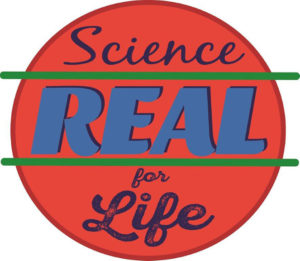Hopefully many of you got to experience August’s Great American Solar Eclipse. Maybe it got you thinking about what else is going on up there among the stars.
There is a wide variety in the types of objects that can be found in our universe and we’re learning about new ones all the time. Each solar object could have a whole article devoted to it, so we’re going to have to cherry-pick some of the most exciting stellar phenomena.
 Let’s start with the Milky Way galaxy, just one of 2 trillion galaxies in our universe. Our galaxy, like all others, consist of stars, star dust and gas, and dark matter, all gravitationally locked to the black hole at the center of our galaxy. The sun orbits the black hole just as the Earth orbits the sun.
Let’s start with the Milky Way galaxy, just one of 2 trillion galaxies in our universe. Our galaxy, like all others, consist of stars, star dust and gas, and dark matter, all gravitationally locked to the black hole at the center of our galaxy. The sun orbits the black hole just as the Earth orbits the sun.
First, we’ll start with how scientists describe planets. All of these planets can be found within the Milky Way, but not all of them are found within our solar system. We’ll also be exploring the types of stars found in the universe and how astronomers study our place in space.
Planets
A planet is a body of mass that is large enough to become rounded due to its own gravity, but not so large as to undergo thermonuclear fusion, the process of combining atomic nuclei to form new atoms. In order to be considered a planet the object has to have cleared its orbit of debris, meaning all the rocks have coalesced into one object or been vaporized by the planet.
 This is what caused Pluto to be reclassified as a dwarf planet rather than a planet. It exists within a field of rocks and debris – the Kuiper Belt – along with other dwarf planets its size, like Ceres and Eris. In time, these objects may eventually form into planets.
This is what caused Pluto to be reclassified as a dwarf planet rather than a planet. It exists within a field of rocks and debris – the Kuiper Belt – along with other dwarf planets its size, like Ceres and Eris. In time, these objects may eventually form into planets.
There are three main classification systems for types of planets:
- Mass regime organizes planets based on their size. Typically the larger the planet is, the more likely it is to be made of a gas than of solid matter. Examples of planetary divisions within the mass regime are: Giant planet, Mesoplanet, Super-Earth, Sub-Earth, Planemo and Planetar.
- Orbital regime describes planets based on their relative position to another body that they are orbiting (or not orbiting). Relative to stars, planets are small objects that are usually gravitationally locked with a larger object, like a star. Some of the more unique orbital paths of planets are; two planets orbiting each other (double planet); planets like Pluto that are much smaller (dwarf planet); planets that do not orbit a star, but the galaxy itself (rogue planet); a planet that orbits two stars in a binary system (circumbinary planet); and 13 other ways to describe based on orbit.
- Finally, there are 17 ways to describe a planet based on its composition. These classifications are pretty straightforward and include planets made of thing such as ice, lava, gas and helium. Some of the categories are hypothetical in nature, like an ocean planet, a desert planet or a coreless planet.
Stars
Stars are even more diverse than planets. They consists of balls of plasma held together by their own gravity. Plasma is the fourth type of matter. It’s not talked about a lot in school because it can be hard to demonstrate and is not found naturally on Earth.
Each state of matter can be organized by energy level, with solids having the least amount of energy, followed by liquids, gases and finally, plasma. Classification of stars is based on its surface temperature, brightness (luminosity), and size. All stars exist on spectrum of these three factors.
You can determine what a star is made of by taking the light from the star and passing it through a prism. When light travels through a glass prism, it is slowed down enough so that the prism can separate out the wavelengths based on size, creating a rainbow. If you look closely at the rainbow, you’ll see black lines. Each element has a specific pattern of black lines; it’s like a barcode for the element. Different combinations of elements will create their own unique barcode, consisting of the lines for each individual element. The strength of the line indicates the abundance of the element.
Reading the barcode of starlight will tell you the composition of the star, enabling you to classify the star based spectral type. This was the first classification of stars done by Annie Jump Cannon in the early 1900s and is still used today. She could classify 200 stars an hour. In her lifetime, she classified about 350,000 stars.
Light – or photons – is released from a star during the process of combining two hydrogen atoms into one helium atom, known as thermonuclear fusion. It is a process that cannot go on forever. Stars are born and stars die.
A nebula is a star nursery where all stars are born. A nebula provides all the materials needed to create a star: hydrogen, helium, interstellar dust and ionized gases. Ninety percent of stars are in the “main sequence” of life, including our sun. The main sequence describes how the star generates energy and the composition of the atoms in the star; it is a continuum based on the star’s age.
Things get interesting when a star is near death. Death for a star means it can no longer fuse hydrogen at its core because there is none left. The bigger a star is, the shorter its lifespan is.
For 97 percent of stars, their death means they will cool to the ambient temperature of the universe. These stars become white dwarfs, because they also shrink in size (without losing any mass). As they continue to cool, they will slowly emit less and less light until they appear black, a black dwarf. No such stars exist because the time it takes for a star to cool this much is longer than the universe has been around.
Some larger stars – such as our sun – will undergo a “red giant” phase before becoming a white dwarf. The outer layers of the star will begin to expand outward, becoming several thousand times larger. The surface of the sun will reach Earth, destroying the atmosphere and possibly the planet. Life on Earth already would have been terminated due to the rising temperatures as the sun grows closer. There is no need to worry though, as this will happen in the next 5-6 billion years.
The most catastrophic event occurs when a supergiant star dies. Once fusion stops happening at the core, a gravitational collapse occurs. This means all the matter quickly – close to the speed of light – concentrates at the core. Within a matter of seconds the star violently explodes, releasing energy at the rate equivalent to a billion stars. This phenomenon is known as a supernova. Heavy elements, anything heavier than iron, can only be produced in supernovae.
What is left over after a supernova occurs is called a neutron star, which is made up almost entirely of neutrons. These stars are, on average, 10 kilometers in diameter, but they can have as much matter as two suns. Neutron stars are the densest objects in the universe. Amazingly, they also rotate at a rate of 100 revolutions a minute.
However, not all supernovas end with a neutron star. A black hole can form instead if the star is large enough (larger than 3x the size of our sun).
With an estimated 100 billion stars in the Milky Way, a supernova will only occur roughly every 50 years. Betelgeuse, a red giant in the constellation Orion, will one day go supernova. Scientists predict Betelgeuse will result in the formation of a neutron star and not a black hole.
Always on the move
Everything in space is in constant motion. The Earth rotates around its axis at a rate close to 1,000 miles per hour (mph) and it moves around the sun on its orbit at a speed of 66,000 mph.
Within the Milky Way, stars are all spinning around the black hole at the center. The stars closer to the center are orbiting much faster. Our sun, however, is far out from the center and along with its planets, is moving at speed of 483,000 mph. One lap around the Milky Way is called a galactic year; Earth is 20 galactic years old.
The Milky Way also is moving through space, but measuring its speeds is a bit trickier. You can’t just compare its speed to another neighboring galaxy because they also are moving. Scientists had to figure out the speed of the Milky Way some other way.
When the Big Bang happened, it produced a massive burst of gamma rays. These rays are the highest energy on the electromagnetic spectrum. This spectrum describes the wide variety of photons, which are classified by the size of wave on which they travel. Radio waves are the largest waves and thus lowest energy, while gamma rays are the smallest and highest energy. Visible light is a narrow band on the scale that falls near the middle of the electromagnetic spectrum.
The gamma rays produced from the Big Bang were everywhere and they expanded out with the universe as it expanded. As the universe expanded, so did the size of the waves. They became x-rays, then UV rays, visible light, then infrared, until they slowed down to what they are today, microwaves.
Scientists have imaged the microwaves left behind from the Big Bang and created a map calling it the Cosmic Microwave Background radiation. In the 1940s, Scientists can use this Cosmic Microwave Background as a frame of reference for the Milky Way to determine how fast it is moving, which turns out to be an astonishing 1.3 million mph.
We are moving toward a gravitational anomaly referred to it as the Great Attractor. All the galaxies near us are headed that way. The mass in that area of the universe is so great that it is attracting all of the galaxies in the hundreds of millions light years surrounding it. We don’t know much about the Great Attractor because it lies behind the disk of the Milky Way, which makes it really hard to see through all of the cosmic dust and light from other stars.
WHAT STUDENTS SHOULD KNOW AS IS RELATES TO SPACE:
Grades 6-8
Middle school students have started to think beyond their Earthly existence and consider other bodies in the solar system or even the universe.
By the end of grade 8, students need to know:
- ESS1-B: The solar system consists of the sun and a collection of objects, including planets, their moons and asteroids that are held in orbit around the sun by its gravitational pull on them.
Suggested activity:
Proving a Sun-Centered Solar System
In this activity, students will use a lamp and balls to demonstrate that the sun is the center of the solar system by comparing calculations from the “Moon’s” shadows to “Venus.”
Grades 9-12
By the end of grade 12, students need to know:
- ESS-1A: The star called the sun is changing and will burn out over a lifespan of approximately 10 billion years.
The study of stars’ light spectra and brightness is used to identify compositional elements of stars, their movements and their distances from Earth.
The Big Bang theory is supported by observations of distant galaxies receding from our own, of the measured composition of stars and non-stellar gases, and of the maps of spectra of the primordial radiation (Cosmic Microwave Background) that still fills the universe.
Other than the hydrogen and helium formed at the time of the Big Bang, nuclear fusion within stars produces all atomic nuclei lighter than and including iron, and the process releases electromagnetic energy. Heavier elements are produced when certain massive stars achieve a supernova stage and explode.
- PS3-D: Nuclear fusion processes in the center of the sun release the energy that ultimately reaches Earth as radiation.
Suggested activity:
Separating white light into its visible spectrum
In this activity, students will break down white light into the colors of the rainbow using an overhead projector. This will help students understand how scientists can use the light from distant stars to determine their composition.
Ashley Richards Best is a fifth-year doctoral student and National Science Foundation graduate research fellow at the University of Louisville.



Leave A Comment